I have just heard that Stephen Karcher, author of Total I Ching and How to Use the I Ching, collaborator on the original Eranos edition, has died. I owe Stephen a great deal, so I’m writing this to express my gratitude.
My very first encounter with the Yi came when I found a copy of Legge in the Oxfam bookshop – but it was when I borrowed the Ritsema/Karcher Eranos edition from the library that I first realised I’d found something I could connect with. Yes, I know now that the Eranos version isn’t perfect, but for me it opened the way into the heart of the oracle – a revelation. I monopolised the library’s copy for a long time, renewed it, and renewed it some more, and finally bought a copy… and then had the idea of doing readings for other people.
Then I found How to Use the I Ching, a modest little beginner’s book that provided exactly what it said on the cover. It has a really excellent introduction – one that doesn’t, unlike most, stop at telling you how to cast a hexagram, but walks you in detail through a process of interpretation.
This introduction was where I first learned to understand the second, resulting hexagram of a reading as the ‘relating hexagram’, the ‘sea in which the primary figure swims’. Stephen wasn’t the first or only diviner to notice that this second hexagram was not rigidly ‘The Outcome’, of course, but he might have been the first to write and teach this. This was because he wasn’t primarily a translator or academic – though he was both of those – but a diviner. He did readings, for himself and other people, and this experience is the foundation for his books. He had conversations with Change, and was hugely invested in introducing people to the oracle so they could do the same, and ways to transformation would open.
I reached out to Stephen, and was lucky enough to meet him a couple of times. In person he was tremendously energetic, brimming with ideas and creativity – think Laozi meets Tigger. After he’d given a long, lively talk out in Cowley, and answered questions afterwards, I imagined we’d take the bus back to the centre of Oxford – not a chance. We walked (or I walked, and he bounced).
He was also unstintingly generous with his ideas and his support. Of course I found it immensely encouraging that he was already making the Yijing his life’s work: it could be done! And he offered me personal encouragement, especially to get started offering readings in conversation instead of just by email.
I was thoroughly apprehensive about this: what if people asked questions I couldn’t answer, and I couldn’t think of anything to say? As part of persuading me to give it a go, Stephen read for me by phone. It was about a business relationship that wasn’t working, and the primary hexagram was 23, Stripping Away. I couldn’t see the wood for the bushes I was beating around, looking for subtle things this might be referring to; Stephen told me completely directly that the relationship was at an end. (It really was.) He also responded to my anxieties with the best advice any diviner could receive: ‘Trust the Oracle.’
I asked Yi to talk to me about Stephen – something I often do when someone I know dies. It responded with Hexagram 14, Great Possession, with no changing lines.
There’s not much to add to that, is there? I think this makes a lot of sense – naturally – as part of the Pair with Hexagram 13, People in Harmony. Stephen was a tremendous synthesiser of Yijing ideas and research, joining many sources into a Great Possession of divinatory tools.
I came to think of him as a kind of Yijing alchemist. Everything he learned went into the crucible – Jung, etymology, myth and legend, insights into the sequence and structure of the Yi… – and every new insight or tool he cooked up, he wanted to see shared and used, explored and developed in live readings, where we could discover how they worked.
I tried to make a list of what’s found its way from that alchemist’s laboratory into my own readings. Right at the foundation, there’s the concept of a relating hexagram. Then there’s the habit of paying attention to Xugua and Zagua, and of thinking of hexagrams as one half of a pair. There are trigrams as ‘spirit helpers’; there are steps of change and (with LiSe) line pathways. There are patterns of change, or ‘change operators’ as he called them later on – first the yin pattern, which I think was part of that brilliant introduction to How to Use the I Ching, and then yin and yang together. There are ideal and shadow hexagrams – the ‘shadow hexagram’, as far as I know, is a Karcher original, something that emerged from Scott Davis’ insights into the Sequence.
There’s also a whole lot more I never quite wrapped my head around – something that would not have perturbed him in the slightest. What he leaves us is –
‘Great Possession.
From the source, creating success.’
Hexagram 14 has the first two of the ‘big four’ words – yuan heng, ‘from the source success’, a ‘primal offering’ – but not the third and fourth – li zhen, ‘constancy bears fruit’, ‘fruitful divination’. We’re left, not with a well-polished, monolithic system, with everything said that he would have wanted to say, but with a great profusion of ideas and approaches to try, a gift waiting to be used. The absence of a relating hexagram seems to emphasise that open-ended quality of the hexagram, leaving the ‘fruitful divination’ part up to us.
I wish I could have quoted Total I Ching in this post, but sadly my copy is tucked away in storage. You can find Karcher on Hexagram 14 at the ‘Mothering Change’ website, though. An excerpt:
‘Circle of Meanings
A great idea, a great leader, a great person, great power to realise; great results, great achievements; an inner concentration of the will around a central idea that brings wealth and abundance.’
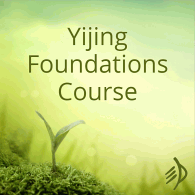

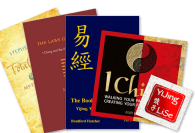
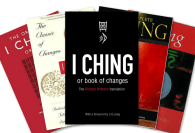
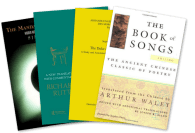
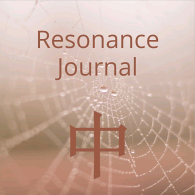


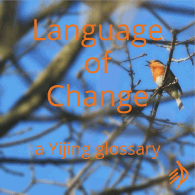


This is sad news! Thank you for articulating this beautiful and moving personal eulogy! I wept reading it as I imagine you did writing it. Your description, “Laozi meets Tigger” blends like Chinese ideogram words and jumps off the page alive. Brilliant!
Stephen was a brilliant man who loved deeply. He is survived his wife Janet Carter and brother Edward Karcher. I will read this to Janet tonight and send to Edward. thank you.
je fais une lecture hebdo sans questions. juste pour savoir l’empreinte du moment. et hier pour l’occasion de la lune croissante j’ai reçu 14 inchangė.
It is very sad to learn about Stephen Karcher demise Hilary. He was much esteemed and standing-out-of-crowd I Ching Guru who will be deeply missed in I Ching community.
Your I Ching casting about Stephen Karcher has produced hexagram #14. It is very accurate characteristics of Stephen Karcher as I Ching Expert. Interestingly that in Karcher’s own book “Total I Ching – Myths for Chang”, hexagram #14 is called “Great Being / Great Possession”. Here the “Great Being” is a very accurate characteristics of Karcher.
Although Stephen and I have never met and he never knew about me as I Ching scholar who reads and learns from his books, Stephen Karcher in fact was one of my virtual mentors and teachers, who shaped my own approach to hexagram reading and interpretations.
Especially important for me was his structured “Scholar Speaks” and “Shaman Speaks” multi-level approach as well as bringing in ideographic analysis of hexagrams – both presented in his book “Total I Ching – Myths for Change”. It brought additional and very important, in my opinion, attention to hexagrams’ meaning that lives beyond the traditional / conventional texts. While scripts and commentaries can definitely help, a true reality – as many would agree – is always richer and stretches far beyond any verbal snapshots.
To show an example of positive vibes inspired by Stephen Karcher’s though process I have performed the reading of Hexagram #14 casted by Hilary in the name of Stephen Karcher with adding there some of my new elements. You can find the whole reading card with Ideographs section and three satellite hexagram orbits here: https://www.iching360.com/forums/Hex_14_Full_Reading.jpg
With all that said – the best memory of Stephen Karcher and his invaluable contribution to I Ching scientology would be continuing his innovative approach to I Ching and his constant focus on finding and developing new venues in the areas that look very old and unchangeable for some people.
I take my hat off before him and hope that he is now in the Universe he was so passionately exploring for all of us.
Hilary, thank you for this beautiful contribution to memorialize Stephen Karcher. He was ahead of many students with his contributions to the field of Yixue and will be greatly missed.
Thank you Hilary for this Nice and friendly words for Stephan. I met him once more than 25 years ago and found bis présence for the group impressing I still remember. I bought bis book in september 2003 and with every I Ching book I buy I cast a hexagram. For this book this was 45 Gathering them/Great works line 5 changing to hexagram 16. Something I pick up his book to studie his way of thinking. Especially when I write a new article. For gathering information from different angles. I Will never forget his elephant and hexagram 16. I’m happy that I met him during my life.
My interest in the I Ching became rekindled last night after reading Carl Jung’s essay on Richard Wilhelm. I was searching for a phone number for Stephen just this minute. I wanted to contact Stephen for guidance and for a reading if he was available. I am sad to discover that he has recently died. My good friend, Colleen Kelley, had often spoken about Stephen. She held him in high regard as an excellent teacher for her and as a very skillful and wise practitioner. Colleen, an artist and teacher, incorporated the I Ching into her other life-long spiritual practices. Colleen passed away last July after a long illness.
Although I missed contact with Stephen, I am glad to read these posts about him and to discover how much he was revered and cherished. May his light continue to grow even brighter.
Beautiful and moving. I didn’t have such a full grasp before reading of just how central Karcher’s work was to the sense of « lineage » of Yi divination (and not just scholarship) that I’ve found (largely through your website, chapeau!) in the past few years.
The Li Zhen, I think, has fallen in our hands, here. His work lives on through our readings and curious devotion, spirited discussion.
Thank you for this moving post, Hilary. I’m so sad to know he’s gone. His books are among my favorites. Blessings to all.
My I Ching journey started with finding a battered copy of an Introductory book by Stephen by chance for sale in my local library in London in 2001. Though falling apart now, I still treasure and consult it as a touchstone with wholehearted gratitude. It has felt important to keep connecting with his online resources and I have always gained insights from the beauty, imagination and layered meanings of his intuitive art work for each Hexagram as well as his vast knowledge expressed in words.
Thank you, Hilary, for your tribute to Stephen.
After a long hiatus from using Yi some years ago, I somehow ran across Stephen’s Total I Ching. The book led through a gateway that both returned me and propelled me to a new relationship with Yijing. This relationship (which has turned out to both long-term and polyamorous) for which I am profoundly grateful, continues to this day. Thank you, Stephen. And thank you. too, for your openness and encouragement of Hilary who – like the excellent teacher that she is – continues to share with us, her comunity and student, what she has learned.
I have been learning the I Ching for a little under a year, and J discovered this page within an hour or so of encountering Mothering Change for the first time. I was so moved by it that I immediately thought to myself that I must contact Stephen, that perhaps I could learn from him – or find someone to mentor me through deeper study. I am saddened to learn I won’t meet him in this lifetime, and I send my warmest condolences to those who had the honor.
This is sad news. I’ve been wondering for many years what’s been going on with Stephen since I haven’t heard anything from or about him in what felt like an eternity. I’ll be forever thankful to Stephen for his translations as they’ve helped guide me so much during critical points in my life for the past 30 years.
Is there any effort to turn his books into ebook versions? I’d love to get a hold of epub versions of his books, but they appear to be non-existent at this time. I’m having to scan my old copy of ‘How to Use the I Ching’ on my iPad, but the scanned pages have the text warped. All of his works need to preserved for future generations. They’re truly the “best” translations out there, in my humble opinion.
If anyone has information on efforts to preserve Stephen’s works into digital format for purchase, please me… and all of us, up to date. ~ Bless
I took a course at a beautiful Buddhist monastery in New Mexico with Stephen, and I have used his books for many years. They are my favorite version of the i ching. I am saddened to hear of his passing. Sending love and light to others who cared about him and his work with our beloved book of changes.